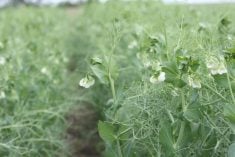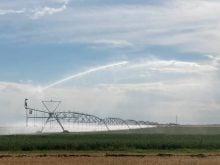As irrigation water allocations become more scarce, irrigation farmers battle each other and government regulators for water rights. Some parties have expressed concern about the long-term sustainability of irrigation farming.
Nutrien agronomy director Karl Wyant lives in Arizona. He said working in the ag sector while living in a desert focuses one’s attention on the question of the future of irrigation.
In a phone interview, Wyant said the problem impacts food production in many key regions.
“Water is there, but we have to become more efficient in how we use it. We’ve improved our management significantly. We’re growing more crop per drop of water than ever before.
Read Also

Equipment manufacturing may return to Canada
Some ag equipment and automotive manufacturers are now adjusting their production and distribution to avoid tariff costs in relation to supplying the Canadian market.
“People in the cities are doing their part, reducing the amount of water they use per capita. For example, in the metro Phoenix area people use 20 percent less water today than they did in 1989. That sort of thing is happening all over.”
He said it’s about trade-offs. Who gets their fair share of the rare commodity? It’s also about managing the source and use. He pointed out that corn yield is sensitive to water availability at tassling. Applying more of the water allocation at this stage might be the optimal use of that water.
“Are we making our reservoirs big enough to handle future demand? Are we drilling wells deeper to find potable water? We have to ensure that our water use is sustainable. We can’t continue removing more water from the system than water that flows into the system. The output has to equal the input.
“Gone are the days with major city development and irrigation farming and other water uses all going on at breakneck speed at the same time and same place.
“Growers are examining their new relationship with water. And the technology is helping them. Growers are using soil moisture sensors, real time moisture data on their cellphones, satellite maps, low altitude imagery. There’s a lot of new technology to optimize water utilization. New crop varieties and drought proofing are an exciting part of what’s happening.”
















